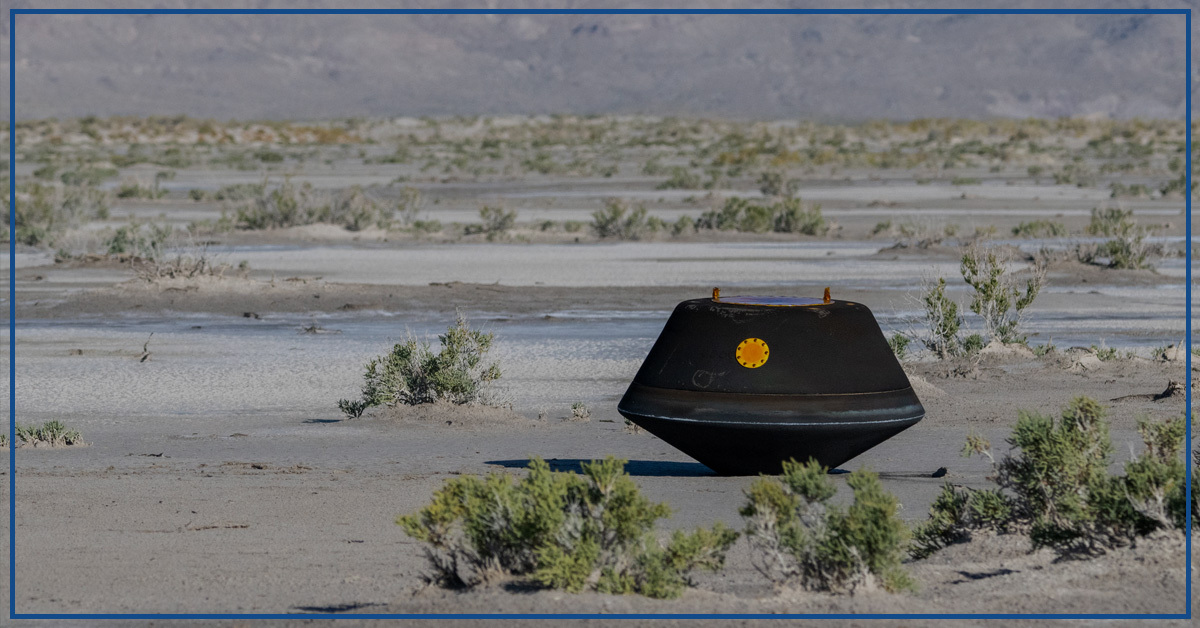A special capsule, containing valuable samples from an asteroid, made a safe landing on Earth this past Sunday. This remarkable achievement marked the end of a nearly 4-billion-mile journey spanning seven years. The mission was led by NASA and involved the OSIRIS-REx spacecraft, which was launched into space in 2016 with the goal of collecting material from the surface of an asteroid. Scientists are eager to study this material as it is expected to provide crucial insights into how our solar system came into existence.
The spacecraft began its mission by orbiting an asteroid called Bennu in 2018, successfully collecting a sample in 2020. It then initiated its return journey to Earth in 2021. The capsule, carrying the precious cargo of rocks and space dust, touched down gently in the Utah desert. After this significant accomplishment, the spacecraft is set to continue its mission by visiting another asteroid.
Most asteroids that enter Earth’s atmosphere burn up in a fiery spectacle, but this capsule, detached from NASA’s OSIRIS-REx spacecraft, descended gracefully with the help of parachutes. Inside the capsule was a collection of pebbles and grit, the result of seven years of effort and a billion-dollar investment. This marks only the third time that samples from an asteroid have been returned to Earth and represents the largest amount of extraterrestrial material collected by NASA since the Apollo Moon missions.
Scientists anticipate that the samples will provide valuable insights into the early Solar System and shed light on the conditions that set the stage for life on Earth. These samples are considered some of the oldest and most pristine materials available for study.

During its mission at Bennu, OSIRIS-REx spent two years orbiting the asteroid, revealing that it was not a solid object but a loosely held-together collection of boulders and gravel. Collecting the sample from Bennu’s surface was challenging due to its inconsistent texture, but the spacecraft successfully obtained around 250 grams of rocks and dust. The long journey back to Earth began, with the spacecraft needing three years to realign its orbit with that of Earth.
Canada’s altimeter, known as OLA, played a crucial role by taking billions of measurements of the asteroid over two years. These measurements helped scientists pinpoint the best location on the asteroid to gather the sample. The spacecraft briefly landed on the asteroid to collect the material.
Bennu’s appeal lies in its age, estimated to have formed within the first 10 million years of the solar system’s existence. Studying the chemical and physical properties of such asteroids is considered one of the best ways to learn about the early days of our solar system.
In the coming days, the team will carefully examine the collected pebbles, using specialized instruments to measure their properties. NASA plans to reserve 70% of the rocks for future scientists, sending between 4% and 5% to collaborators in Canada and Japan. The remaining 25% will be thoroughly analyzed by the mission’s science team, composed of over 200 experts worldwide.
As part of its extended mission, the OSIRIS-REx spacecraft will continue to study the orbit of the space rock and is even scheduled to approach another asteroid, Apophis. There, it will use gas thrusters to dislodge and study rocky material from the asteroid, further expanding our understanding of the cosmos.





